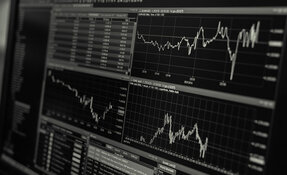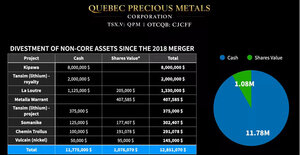Frank Holmes: You're basically dealing with probabilities. The only certainties are that we're going to pay taxes and we're going to die; after that it's probabilities. At U.S. Global, we try to apply our matrix of top-down macro models. We also look at cycles. You're historically in a festive, emotional buying season for gold at this time of year. There's a difference between the mind and the heart. The bulk of the world's gold demand is jewelry and that's for the heart. Recently there's been more and more of the mind, which means making decisions based on concern about currencies. I think when those mind and heart forces overlap, you can get these big moves.
But what's much more predictable on a probability basis is a seasonal demand that picks up. September 9 was the last day of Ramadan, which is the first part of the season that you really see gold buying take place. Then we go through wedding season and the big season of lights in India, the Diwali season, then Christmas and then Chinese New Year. So we have a dual combination of demand for gold. You're seeing price makers, not the price takers, buying gold. Bangladesh just bought $400 million worth.
TGR: How important do you consider that Bangladesh transaction?
FH: I think that that's very significant because that's one of the poorest of the emerging countries, but it's one of the most populated. The average income is less than $200 a month. That government, which exports clothes, etc., manufactured at low cost, is taking back dollars and euros. That signals to the markets that they want to diversify foreign reserves to own gold. So I think that this is a very significant factor regarding trusting government policies when it comes to the value of their currencies.
TGR: In our last interview you said, "Gold takes off when money supply and deficit spending grow while real interest rates fall below zero—that is, when the rate of inflation exceeds the nominal interest rate." Looking around the world, we see that the U.S. and European governments at the very least are engaged in fiscal policies that are both growing the money supply and increasing deficit spending. Meanwhile, real interest rates, at least in the United States, are pretty much at zero. So it looks like the factors are in place that you say will make gold take off.
FH: Gold has taken off; it's in motion. The last thing you want is for it to shoot up thousands of dollars overnight. That would be a crisis of serious magnitude. I think that we're going to see gold gradually grow in value relative to other currencies in the world for two reasons. In the first place, emerging markets have already taken it on the chin. They've had currency crises, etc. They basically have very low debt per person, very low debt as a country. They have growth rates because their government policies are for infrastructure spending, which creates sustainable jobs. And in those countries there's an emotional attachment to gold for gift-giving. So that's a key factor.
But let's back up. Over the past 400 years, there have been 47 credit currency crises. That means about one every decade. When there is a currency crisis, it takes about 16 quarters to turn around. That's very long, four years. Most people confuse what we're seeing as a recession induced by rising interest rates, but those recessions last only four quarters.
TGR: So we're in the midst of a currency credit crisis rather than a recession?
FH: Yes. Because these crises continue for 16 quarters, we're a little more than halfway through it. I think that it's important to go back and look at these historical cycles. It's like the '30s, which is significant. China has not had such a currency disaster, but Asia did—Thailand, Indonesia, etc. in '97. It took four years; it was 2001 before they bottomed. Russia's was in '98, and they didn't bottom until about 2002, another four-year cycle. In a micro way, in America, the S&L crisis in '87 didn't bottom until '91. So this play-out takes place and there's lots of volatility.
An important pattern that drives these currency issues is leverage. The number-one factor is over-borrowing by governments and citizens. That takes time to wear away, so you're going to have deflation. Governments will panic, and to get exports to create jobs, they'll devalue their currency with policies. It's basically human nature that has 400 years of data points to give you a view of this.
TGR: So if we're halfway through the four-year cycle of the currency devaluation, what can we expect in the next two years?
FH: My thoughts are that in the next five years gold's going to double. That means it's going to grow at a 15% compounded rate of return, which is much greater than what's expected of bonds. The next five-year bond will grow at 2%. What's interesting is that gold's volatility for the past 10 years has been less than the S&P's volatility.
If it doubles in five years, we're only going to get back to 1980 inflation-adjusted prices, at still a 15% compounded rate of return.
TGR: What does that mean in terms of gold stocks?
FH: What that means to gold stocks is much more significant because there's an approximate leverage of almost 3-to-1. So if gold doubles, you can turn around and get three times that in gold stocks—particularly those with characteristics that we have been able to do in our regressional studies that protect shareholder value with growth in production per share or reserves per share. A real serious issue in capital markets is dilution, with gold mining companies issuing shares faster than they have gold in the ground or production increasing.
TGR: Gold stocks often have volatility indexes going to 40%, so on any given day we can expect big swings. Over time should we expect this 3-to-1 ratio despite that volatility?
FH: I think so. It's historical. It goes back to the '70s. Sometimes it goes down to 2.5 to 1 or 2 to 1. Sometimes it goes up to 4 to 1. But it averages around 3 to 1. The big-cap gold stocks that have this huge leverage typically work in South Africa. The reason for that greater leverage is a combination of currency swings along with the changes in price of gold. They can have a significant impact on the cash flow of these gold mining companies.
TGR: So if the general ratio is 3-to-1 in terms of gold stocks relative to the underlying commodity, wouldn't it be a good play just to buy into a gold index?
FH: I think it's helpful to diversify. We've advocated that investors consider having 5% in bullion or buy the one you love lots of high-quality gold jewelry. This is contrary to all those TV pitches saying, "Sell me your gold." We also suggest investing 5% in unhedged gold stocks.
TGR: Your Gold and Precious Metals Fund (NAV:USERX) is outperforming its comparative index, which is the FTSE Gold Mines Index. What has caused your fund to outperform its general market basket?
FH: As I mentioned earlier, we use a set of matrices that are top-down macro models. But we also use a bottom-up micro stock-selection model to determine weightings in a certain commodity. It could be gold or overweighting silver, etc., and silver has a higher volatility beta than gold. So in a rising market, we will see a greater exposure on silver holdings as we rotate into them. I think it's this capacity of using disciplined macro models to overweight the commodity-based securities, and even sometimes countries.
Back in 2003, the best performing gold stocks were big-cap South Africans. The price of gold went from $250 to $325 and these stocks went up 120%. The following year gold went to $400. These stocks were laggards—dramatically. There's no performance. Why? Because their currency went up faster during that period and wiped out all their cash flow, whereas Latin American gold mining company producers exploded with that rise of gold over $400.
So one has to look at the currencies of where the company is producing its gold and one has to look at what we like to call GARP, or basic "growth at a reasonable price," in our stock selection model. As I indicated, we focus on historical and social economic cycles, applying both statistical and fundamental models, including GARP, to identify those companies with superior metrics.
TGR: Can you share with us trends in your fund today—either trends in countries, because of the currency play, or trends in companies that represent good GARP?
FH: I think the best country right now for value with government policies—and I've met with the ministers and the new president—is Colombia. The best performing stock last year on the Toronto Stock Exchange was Pacific Rubiales Energy Corp. (TSX:PRE; BVC:PREC), which has oil in Colombia. Government polices attracted capital. This was spectacular. It was up 600%. Even year-to-date it's had great performance.
The Colombian government has made a real push to improve the gold mining industry too. There's been a move away from artisanal miners (who basically use mercury, which is bad for the community and banditos) towards high-quality mechanized mining. It still employs thousands and thousands of people, but you won't see the environmental disasters that have taken place previously with a bunch of those small miners that have no quality compliance. So I think Colombia is a country that is spectacular.
TGR: Any particular gold companies that come to mind?
FH: A big holding for us is Medoro Resources Ltd. (TSX.V:MRS). If you take a look at the size of Marmato, their gold deposit. . .it's so inexpensive as a producer and for reserves in the ground and the whole consolidation taking place. Another one is Gran Colombia Gold Corp. (TSX.V: GCM), which just went public. Those two companies combined have a $600 million market cap, but also 16 million ounces of production. So I think the rushes going into other countries are going to start to show up in places like Colombia.
TGR: Are there any other emerging countries we should be watching?
FH: The key—and it's becoming more so than ever—is to look at government policies. Because we're a big believer that government policy is a precursor to change, we monitor and track fiscal and monetary policies of the world's largest countries both in terms of economic stature and population. We like to compare the G7, the seven countries with the highest GDP in the world, to the E7, the seven most populated countries. Then within that subset, we compare, say, Colombia versus the E7.
TGR: Okay.
FH: This analysis gives you an idea on those government policies, the ease of doing business, the tax rate. Are governments pro-business? Do they move the goalposts in their favor on a regular basis? That's a problem in Africa. Companies put in a lot of capital to become successful, and then the leadership changes all of a sudden, the democracy unravels and they want to confiscate your assets. So you have to be really sensitive to that.
In Latin America, Colombia is great and Chile is a home run. Peru is improving dramatically. Argentina is a disaster, on a relative basis. Policies there are just very difficult. But the worst is Venezuela. It's a great case study of poor government policy, in contrast to very progressive and constructive government policy in neighboring Colombia.
TGR: Especially in South America, countries seem to change roles dramatically within a fairly short timeframe. For instance, a decade ago you couldn't visit Colombia without armed guards.
FH: The change in Colombia started 20 years ago. Colombia really had a big, big change with President Clinton and what he did with the former President of Colombia, Andrés Pastrana. But it was Álvaro Uribe who was significant in developing and implementing a very structured model of security, basically peace and prosperity. Colombia is very aligned with America. They have a huge trained military force to basically go after the Revolutionary Armed Forces of Colombia—FARC—which is a guerrilla mafia organization. He's done a great job. Juan Manuel Santos, who is now Colombia's president, was the minister for defense during that period. His cabinet has the highest percentage of women of any Latin American country; he's very, very cutting edge relative to other countries and very much pro-business.
TGR: Shifting over Asia, you are on record as disagreeing with predictions that an impending real estate bubble in China will result in significant economic pullback. You are saying that demand in China—and also in India—is and will remain strong. Are you looking at infrastructure, agriculture, consumer products, metals? What does that mean for the investor?
FH: I'm coming back to governments. One has to take a look at those policies. Chinese policies are two-pronged—peace and prosperity—with prosperity basically being people's pursuit of their own economic fortune. China is very sensitive to the general public. Here's a classic example. China just recently changed its policies to say that the wood used in housing construction doesn't have to be just hardwood. You can use the soft wood, applying certain different engineering specs when building with it.
Investors want to be mindful of where all that soft wood will come from. Home Depot basically says that its cost of lumber is not what you see on the Chicago Mercantile Exchange. They have to pay more. We move quickly trying to identify those new companies, alternative sources, such as lumber companies and companies that are basically in the forestry business.
It's important to follow the policies of Chindia—that's what China and India are actually known as. They are just so big, with 38% of the world's population. That's profound. Having such a massive population increase by only 10 basis points, demand for any type of commodity creates a magnitude of 10 times that in the normal demand cycle. China is coming out with a new budget in October. They come out with forecasts, etc., on what they're doing, how they're going to spend money.
So that's what investors have to look at if they monitor and track. So many talking heads, in New York in particular, who have never been to China or India. Never. And they have more opinions than you can think of. If they go there and see what's taking place, all of a sudden they'll stop the negative rhetoric.
TGR: You take pride in the fact that you and your organization put feet on the ground.
FH: I've talked about our macro/micro models, which are very important for us at U.S. Global. We basically overlay these explicit knowledge models with our tacit knowledge. Domestic and global travel for first-hand observation of local geopolitical conditions as well as companies and projects gives you tremendous tacit knowledge. You get a sense and feel that you cannot get from reading The Wall Street Journal or the Financial Times. It's tasting the food. It's tasting your wine. You can read a wonderful set of verbs and adjectives to describe it. But there's nothing more substantive than basically going there. You have to taste it. I'm a big believer in that.
I've visited properties in some countries and immediately said to sell. I want to sell. Why? Because I don't have confidence in the management. Other times I've turned around and said that we have to accumulate our position. You only get that from that experience.
TGR: Where have you been visiting?
FH: I have been spending more time in Colombia because Colombia has been one of the best performing stock exchanges in the world year-to-date. Thailand has also been one of the great stock exchanges of the world. There's been greater performance for my funds coming out of those two countries; I've probably spent more time there than Africa.
TGR: You personally and many others in your organization have visited China specifically, correct?
FH: Right; we've had many people in China. It's not just me as a road warrior. We had employees in Beijing and Shanghai in China in August. We sent analysts to Hong Kong for the CLSA Investors' Forum in mid-September; about $2 trillion of money management assets were represented there.
TGR: Your China Region Fund (NAV:USCOX) is up about 2.5% for the year, and the Gold and Precious Metals Fund is up 12%. Since you are laying this intellectual foundation in China, would you expect it to start performing better next year?
FH: The sentiment about China's real estate bubble was a drag on the economy. The government tried to slow down real estate to keep it from overheating. It appears that's been done. But it was greatly over-exaggerated by a risk-averse society. We're now seeing the money flows out of equities and the industry is net redemptions. It doesn't matter that last year we had the number-one gold fund. You're up and people cash in right away because they don't trust.
The dangerous part is all this money that's going into long-term bonds yielding 2% and 3%. This is a signal of sentiment that people are deleveraging risk. The biggest returns are always in equity markets, where there's always greater risk. But people are fearful and not understanding that what took place in 2008 was forced redemptions by banks that had to comply with FASB 157 accounting. It forced $1 trillion of hedge fund redemptions. It created this sort of cascading down, also triggering no car loans and a breakdown in mortgages as they had to comply with the FASB 157. This is very different from something that's sustainable cascading down.
When they changed those rules, all of a sudden those equity markets took off, but confidence will take a while. I think that investors will do much better looking at capital markets to make long-term rates of return. Think of a 30-year mortgage hitting 3% or maybe lower. It's unbelievable to think that.
TGR: It is amazing.
FH: And where two-year government bonds are trading. But this is fighting deflation. For the past 10 years I've said that everyone's anchored looking for inflation. But when you have negative real interest rates it's because the government is fighting deflation. Deflation can last a lot longer and it's more painful for many people. Government policies to deal with that usually overreact. We're seeing that.
And gold starts to perform whenever you have big deflation or big inflation because of the response mechanism—the dynamics of people, Political Sociology 101. That's what we're living with now. I think we'll have another four years, maybe five years, of wrestling with this deflation and then we'll see the big inflation.
TGR: So four years with deflation. You were talking about being two years into a four-year currency devaluation cycle.
FH: Cycles will overlap. You also have a one-year seasonal cycle, a four-year U.S. presidential election cycle and a 20-year Kuznets cycle, which is basically driven by infrastructure spending. Most of the emerging markets are in that phase. I figure India is halfway through the Kuznets cycle, with another 10 years for it. Five years is going to be battling deflation. Then we take off with inflation.
TGR: In terms of the upcoming midyear elections, without some type of lightning-rod focus for the Republicans, do you think it's possible for the Democrats to lose 60 seats? What effect do you think that could have on the market?
FH: I don't think you're going to get the runaway turnover. I believe the market has its own intelligence and the stock market is a forecasting tool six months out. So is the stock market ripping and roaring? No. So what is that telling you regarding the outcome in November? I think that many executives, myself included, are trying to deal with this onslaught of anti-money. It's attacking the 6% of the population that pay 50% of the income taxes. It's vilifying anyone that's in the financial community. It's hiring more and more regulators who really have no concerns with outcomes that create jobs and the formation of capital. It's very fear-driven.
So when you add those factors up, you've seen that they've basically taken place in other cycle crunches. It's what it is. The biggest part I have to think about in running a business is how to manage that? The uncertainties in financial reform. What is the cost and burden of that? What about healthcare? AT&T took a $1 billion charge, but others are wrestling with what it's going to really cost. The agreements that were basically pushed through are so massive and complicated. I think right now the market is trying to digest two huge pieces of legislation that are very, very anti-business and very, very pro-bureaucracy. How that unfolds as people try to digest it, we'll see.
I'm a big believer that in sporting events you need referees, but you can't get a game to have a positive outcome of scoring if there are more referees than there are players.
TGR: Love that analogy.
FH: It's probably better to have better-trained referees that allow the game to be played. Right now they're saying, "We don't want you to play the game," and that creates a real significant psychological drama. People are very fearful. When I talk to Washington lawyers and accountants, I listen to them. I hear their thoughts. What I get out of it is the emotion of fear.
Dominique Moisi wrote a wonderful book called The Geopolitics of Emotions. He noted that in countries such as India, it's so poor and dirty, there's nothing but hope and policies are for hope. In Europe or America the policies are based on fear. It's even worse when policies are based on humiliation; that's what allows terrorism to take place, in countries where people feel there's no upside. When you humiliate people, they want you to feel pain greater than what they're experiencing. I think that happened earlier this year when the engineer took his airplane and flew it into the IRS building in Austin. He was humiliated and that was his response. We need leaders who basically have a mission and a statement of hope—not vilification, but hope. Right now it's not happening, but it will happen.
TGR: Thank you so much, Frank, for concluding on that optimistic note today.
Frank Holmes is CEO and chief investment officer at U.S. Global Investors Inc. (NASDAQ:GROW), a registered investment adviser with approximately $2.56 billion in assets under management. Frank coauthored The Goldwatcher: Demystifying Gold Investing, which was published in 2008. A regular contributor to a number of investor-education websites and speaker at investment conferences around the world, he maintains an investment blog called Frank Talk, writes articles for investment-focused publications and appears as a commentator on business channels such as CNBC, Reuters Television, Bloomberg Television, Fox Business Channel and CNN's Your Money. Frank also has been profiled in Barron's, Fortune, The Financial Times and other publications.
Want to read more exclusive Gold Report interviews like this? Sign up for our free e-newsletter, and you'll learn when new articles have been published. To see a list of recent interviews with industry analysts and commentators, visit our Expert Insights page.
DISCLOSURE:
1) Karen Roche of The Gold Report conducted this interview. Karen personally and/or her family own shares of the following companies mentioned in this interview: None.
2) The following companies mentioned in the interview are sponsors of The Gold Report: None.
3) Frank Holmes personally does not own shares of any companies mentioned in this interview, but they are owned by U.S. Global's mutual funds.










































